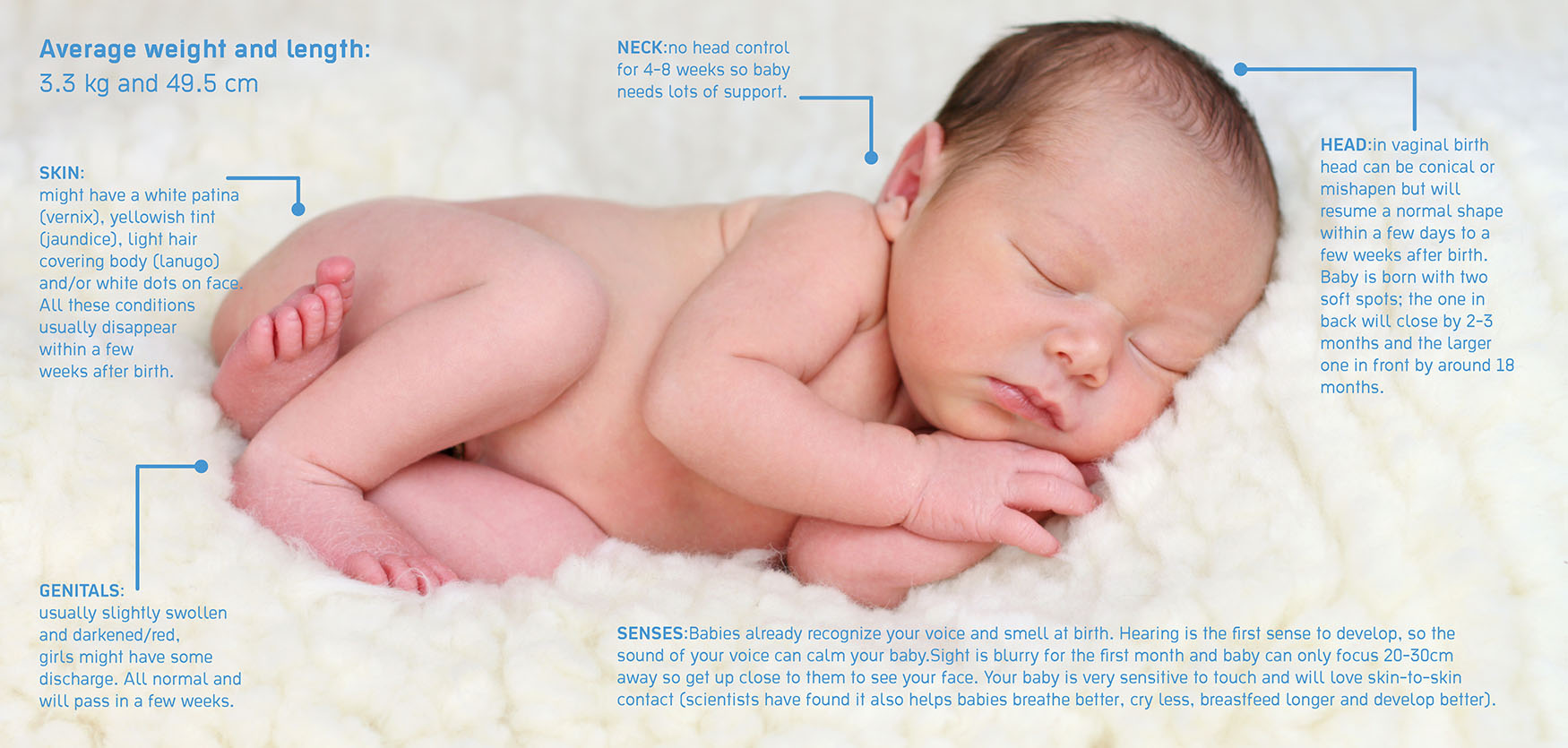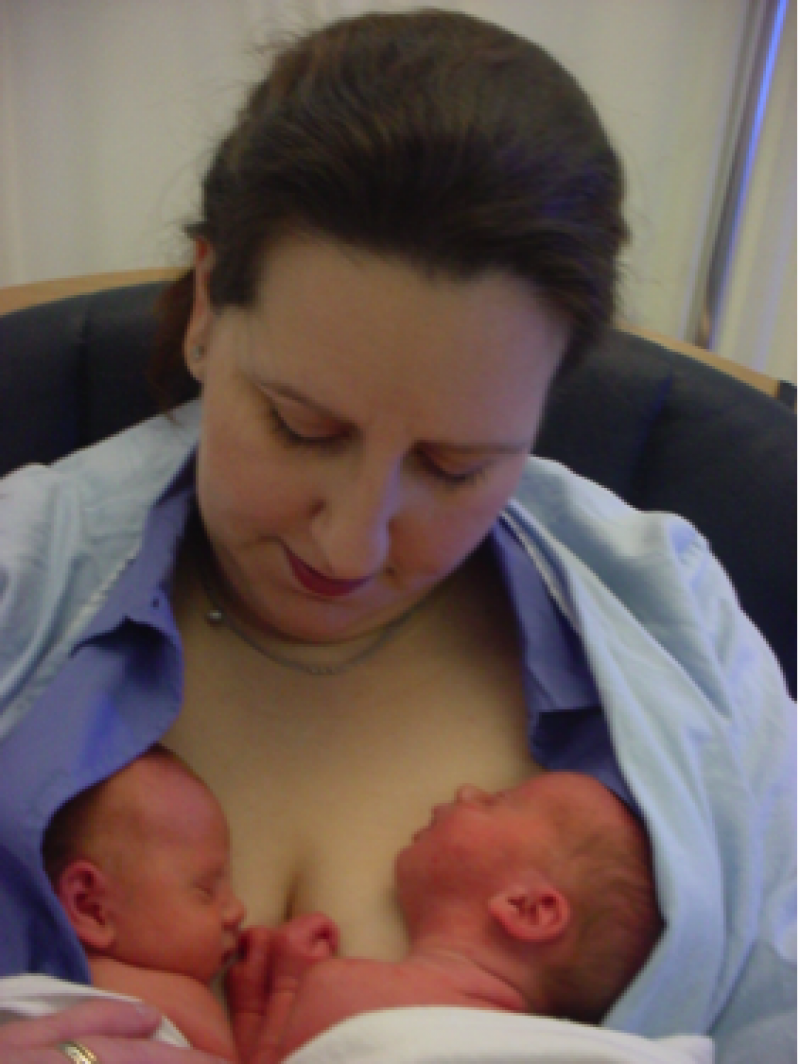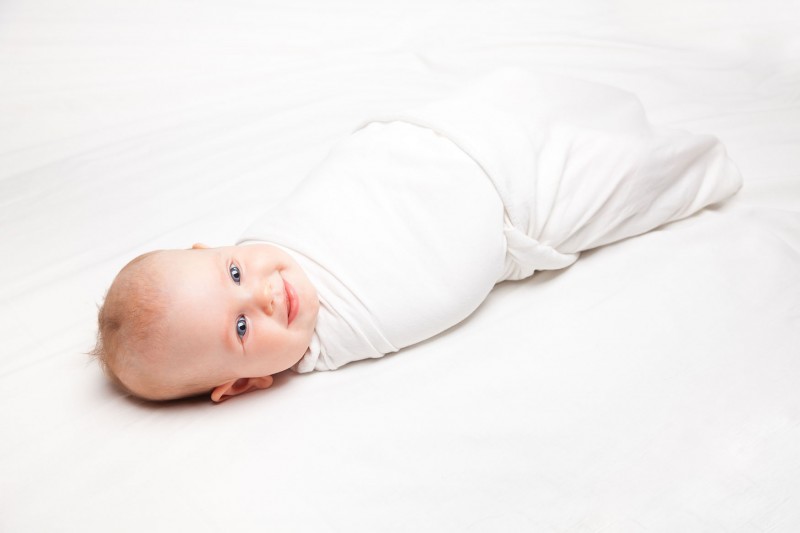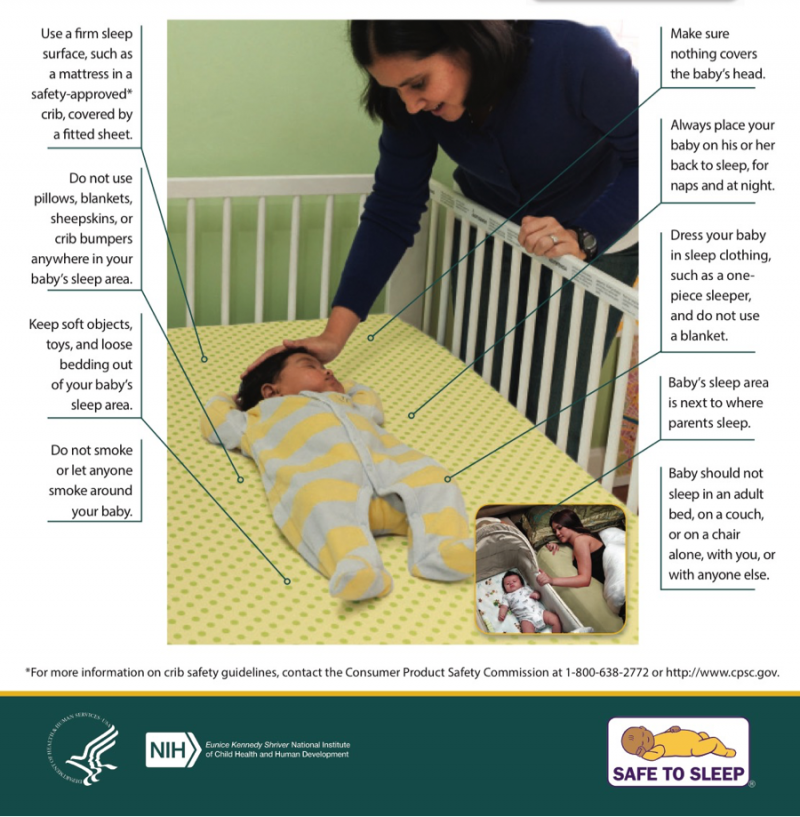
Most first-time parents are anxious and concerned right after they take the baby home. It takes about six weeks for most couples to feel better about having a baby. Here’s a short-list of things you can do to make things a little easier:
Learn to speak your baby’s language so you can respond to her needs and she won’t have to escalate to crying.
Holding your baby skin-to-skin is a very powerful way of bonding with baby and is the best thing for his physical, mental and emotional health. It will reduce baby’s stress, which means much less crying and better physical and emotional development. This is because the baby feels SAFE on his mother, hearing the familiar heartbeat, voice and smell; this all stabilizes baby’s heart rate, breathing and temperature. If your baby was born prematurely, it is even more important to practice skin-to-skin.
It will help with breastfeeding, triggering the right hormones which makes the milk flow, and will also help fight those “Baby Blues” and postpartum depression. Fathers especially can benefit from practicing skin-to-skin as it is an excellent way to help bond with his new baby, and give you a break.
Here’s how to do it:

Remember, you can’t spoil your baby with too many cuddles or attention.
Make sure you place baby on a firm flat surface and if the surface is raised (like a change table), keep one hand on baby at all times. For your newborn, make sure you use wipes that are alcohol and perfume free, or just plain water and a clean cloth, to avoid irritation. When changing a boy’s diaper, cover up his genitals to avoid being sprayed. When changing a girl’s, wipe front to back to avoid infections. For boys and girls, fold down the upper edge to avoid the umbilical area.
Here are some important facts to remember about your baby’s toileting:
Your baby might get diaper rash. This appears as a patchwork of bright red skin on baby's bottom. It might make your baby fussy and especially upset during a diaper change. It is often due to wet or infrequently changed diapers, skin sensitivity, chafing/rubbing from tightfitting diapers or clothing, or irritation from a new product like wipes, diapers, creams or laundry detergent. Also when babies start solids they can get diaper rashes. Generally, a diaper rash can be easily treated at home by:
If baby's skin doesn't improve after a few days of home treatment, talk with your doctor. See your doctor if the rash is severe, gets worse despite home treatment, bleeds or oozes, causes pain when baby is peeing or pooing, or if baby also has a fever.
Until the umbilical stump falls off, only sponge bath baby using a warm, damp washcloth every few days. Thoroughly clean the genital area after each diaper change.
Your baby's umbilical cord stump will drop off in about 10 days. Until then, here's what to do:
After the umbilical stump has fallen off and the area has healed, baby can start having baths. It is only necessary every few days or so as baths can dry out baby’s skin. If your baby likes baths, you can do them more regularly (just use cream afterwards), but if they don’t (some cry the entire time), do them quickly and less frequently.
Bathing your newborn will probably be scary at first, as they are very floppy, wriggly and slippery, especially when you add a little soap! Remain calm and maintain a firm grip. You might want to have someone help you the first few times. Remember, never leave the baby alone in the bath, or turn your back, even for a few seconds. Watch our video for how to give baby a bath and the things you will need.
Baths are a really nice way to calm some fussy babies, although generally it is recommended to do it when baby is awake and contented. Often mothers use it as part of the bedtime routine once baby is a few months old as the warm water can make babies sleepy.
Trim baby’s nails a few times each week as they grow fast and can easily scratch her face, and yours! In the early weeks, you can usually peel them off with your fingers as they are very soft. You can also carefully clip with baby nail scissors or clippers, or a nail file.
Dressing a newborn can be tricky since they are so floppy. Make sure you support baby’s back and head well, either in your lap or lying on a flat firm surface. To dress her, stretch the clothing neckline and pull it over baby’s head, then put your hand into the armhole from the outside and grasp your baby’s hand to pull it through. To undress her, first take off the sleeves one at a time and then stretch the neckline, lifting it free of her chin and face as you gently slip it off. Here are some other things to keep in mind:
Swaddling is when you snuggly wrap a thin blanket around your baby so that it covers most of her body below the neck. Swaddling can help keep your baby calm, soothe her when she cries or is fussy, and help her sleep better during naps and at bedtime. This is because babies are born with the Moro, or startle, reflex. When your baby is startled or feels a loss in support, he will suddenly throw out her arms and quickly bring them back in. This reflex disappears by 3 months. Babies will have this during sleep and it will often wake them, which is why swaddling for sleep is helpful since it keeps the arms down and helps baby feel secure. Watch our video to learn a few different swaddling methods.
Keep your swaddled baby safe when sleeping by checking that:

Newborns sleep an average of 16+ hours per day, which sounds like a lot, but they wake frequently and rarely sleep more than 3 hours in a continuous period. This is because they spend more time in light sleep for their brain development. They also need to feed often; for breastfed newborns every 1-5-3 hours, for formula babies every 3 hours. By about two months age they will be sleeping longer during the night.
The following is a guideline of the typical sleeping patterns during baby’s first year. But all babies are different and some need more sleep than others. Patterns might also change based on milestones in cognitive and motor development, such as crawling, teething, and with separation anxiety. Let your baby tell you what she needs and look for signs of tiredness e.g. rubbing eyes, pulling ears/hair, yawning, or extra fussiness.
|
Age |
Sleep hours total |
Average awake time |
Number of daytime naps |
|
Newborn |
16+ hrs |
50 mins-60 mins |
Many. No pattern and wakes often to feed. |
|
1-2 months |
±16 hrs |
60 mins-1hr 20 mins |
3-4+. Baby adapting to night versus day. |
|
3-4 months |
±15 hrs |
1 hr 20 mins-2 hrs |
3+. Some can sleep 6-8 hrs straight at night. |
|
5-6 months |
±14 hrs |
2 hrs-2.5 hrs |
2-3. Naps are getting longer with one morning and one afternoon nap. |
|
7-9 months |
±14 hrs |
2.75 hrs-3.5 hrs |
2. Might be harder to put/keep asleep due to separation anxiety. |
|
10-12 months |
-14 hrs |
3.5 hrs-4.5 hrs |
2. Naps might be getting shorter, especially the morning nap (dropped 1st). |
Babies often moan, groan, whimper, snort and kick in their sleep. This can be worrying, but is often normal. Babies under six months will often change their breathing rhythm during sleep; for example, breathing fast, then slow, then pausing for up to 15 seconds before resuming a normal breathing pattern. If you're worried baby has stopped breathing, simply touch or nudge her gently to see whether she responds. If she doesn't respond, she needs your help immediately. Babies can jerk awake (the moro reflex), grind their teeth, rock back and forth and bang his head against the crib, all of which is normal and not harmful. Babies can also snore and snort, and while this is common especially if baby has a stuffy nose, if snoring is persistent talk to your baby’s doctor.
It is very important to always put baby to sleep on her back. This greatly reduces the risk of Sudden Infant Death Syndrome (SIDS). The peak age of SIDS is between 2-4 months. Most SIDS deaths are associated with sleep, and one of the largest risk factors is stomach sleeping. Since babies have been put to sleep on their back in the U.S., deaths from SIDS has fallen by over 50%. Once babies can roll over and back on their own, at around 4-7 months, it is OK to let them sleep on their stomach if they roll onto it after you put them to sleep on their back. Other ways to reduce SIDS includes:

If you plan on having baby sleep in your bed, it is very important to follow these guidelines to keep baby safe and prevent suffocation. About half of all SIDS deaths happen when a baby shares a bed, sofa or sofa chair with another person.
Tummy time is essential from day one to help baby grow strong and develop well. It helps babies learn to push up, roll over, sit up, crawl, and pull to a stand. It also helps prevent ‘flat head’ since babies are put to sleep on their back. Some babies don’t like tummy time as it can be unfamiliar and uncomfortable. If baby cries during tummy time, try to coax him a bit longer by talking or playing with her. A good time to practice tummy time is when baby isn't hungry or tired (wait about an hour after feeding to avoid spit-ups or infant acid reflux). Some parents find it helpful to practice it during each diaper change.
Category: Baby BasicsWe offer free classes across Kosovo at our Mom's Class Centers (Women’s Health Resource Centers).
Find your local class here.
Free classes